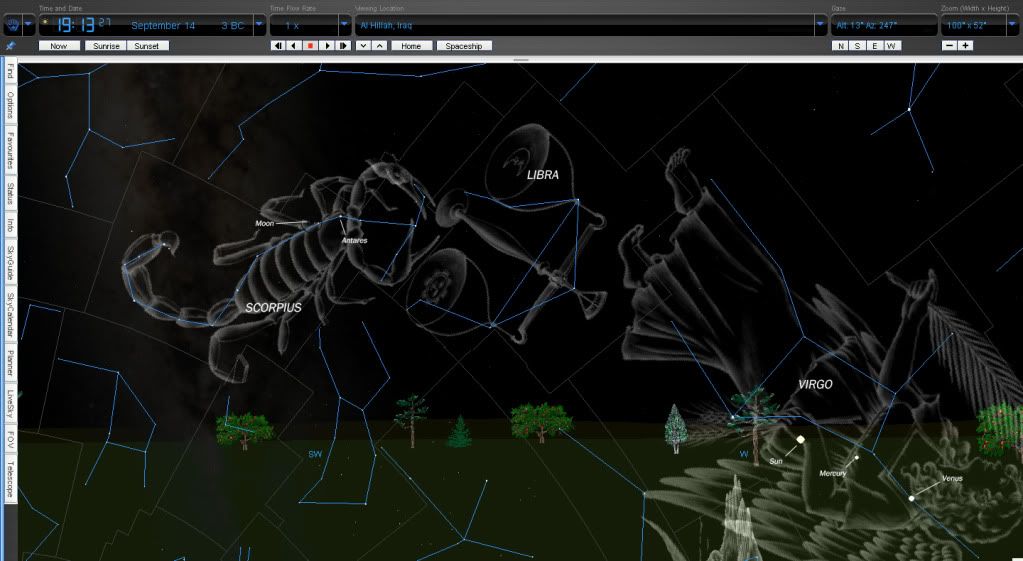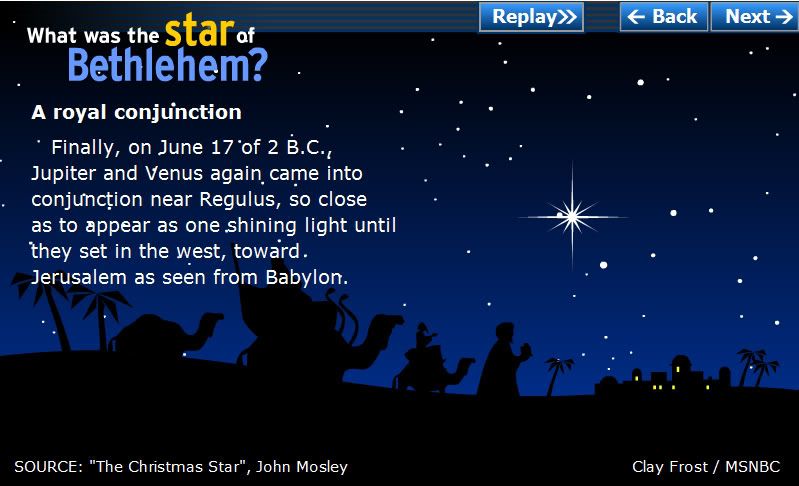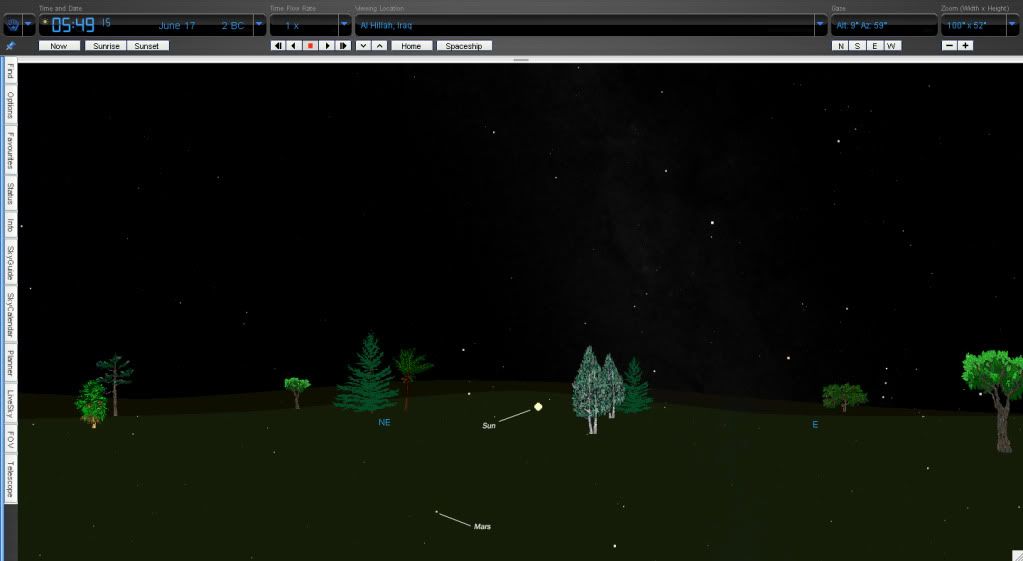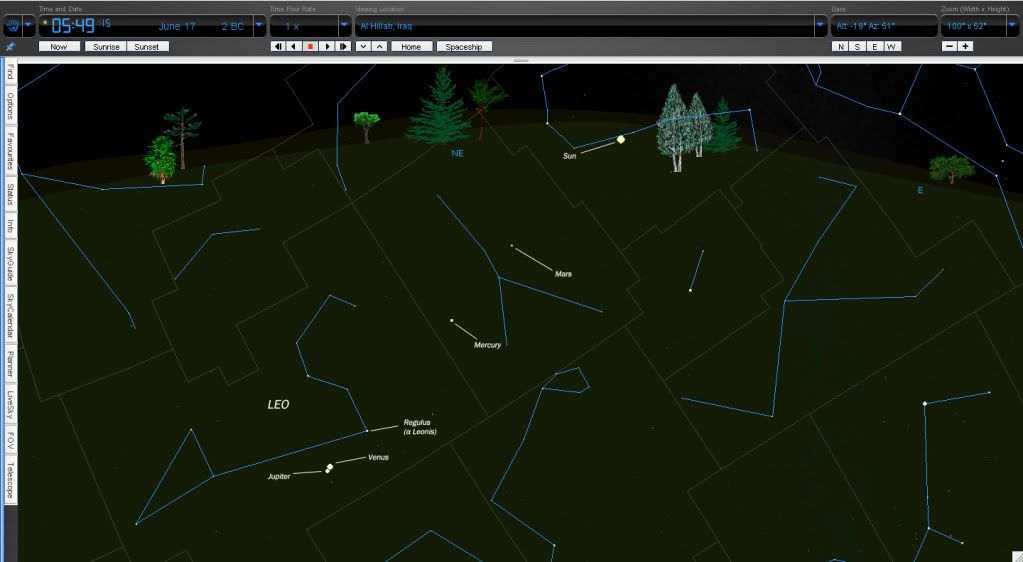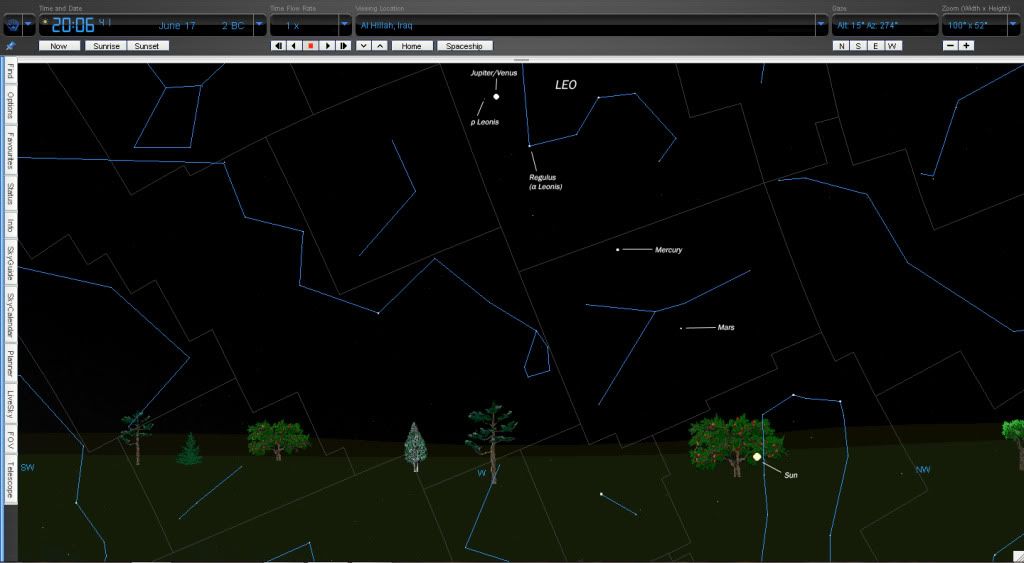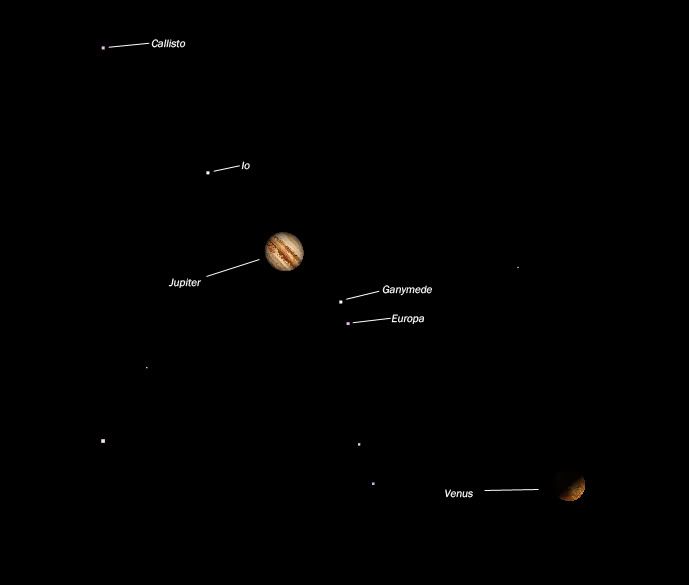Right then. Here we go with the final chapter of this saga. Don't worry, this bit's going to be much quicker than last time.
Larson has clearly been getting over-excited by events:
"As Jupiter was beginning the coronation of Regulus, another startling symbol rose in the sky. The constellation which rises in the east behind Leo is Virgo, The Virgin. When Jupiter and Regulus were first meeting, she rose clothed in the Sun. And as John said, the moon was at her feet. It was a new moon, symbolically birthed at the feet of The Virgin."
The John referenced here is the one with the Revelation fetish. Apart from misidentifying a waxing crescent Moon as a New Moon (and I'm not just being pedantic, there really
is a difference) everything Larson says here is essentially factually correct, although positively dripping with ridiculous hyperbole. Just how ridiculous I can actually illustrate:
Here we can see The Virgin acrobatically balanced on one shoulder and launching poor Baby Moon like a cannonball, shooting the poor scorpion from off its scales and ricocheting off its carapace to finish up god alone knows where (I realise the Moon is extremely hard to see, being a mere thin crescent; trust me it's there). Not exactly a very dignified way for the mother of Jesus to behave. The astrological rationalising behind such uncomfortable contortions completely escapes me, I'm afraid. "The sheer concentration of symbolism in the stars at this moment is remarkable" says Larson, and I couldn't agree more.
"These things" he continues, blissfully unaware of the irony, "could certainly lead our magus to conclude that a Jewish king had been born. But even this is not the whole story. These symbols could indicate a birth, but if they were interpreted to indicate the time of conception, the beginning of a human life, might there be something interesting in the sky nine months later?"
Alright, let's have a look. As he yet again fails to supply any data worth a damn, I'm having to use Mosley's slideshow for reference. Here's what he says about it:
That slide just shows the popular image of the Beth Star. It's pretty but totally devoid of any useful information. Worse than that, when taken with the text it gives the impression that Jupiter, Venus and Regulus all appeared to merge into one über-bright superstar, in a similar manner to that depicted in "Omen III - The Final Conflict", which had three stars fusing into one as a sign of the Second Coming. Let's see what it really looked like:
Dawn on the morning of June 17, 2 BCE (a Tuesday, apparently). Again, just to one-up God, I've made the ground translucent for convenience, plus I've switched off the daylight. Here we see the Sun on the point of rising in the Northeastern sky, with Mars shown for reference. So where are Jupiter and Venus?
They're well below the horizon and completely invisible to our Magus, unless he had x-ray vision - and if he did, why aren't we telling
his story instead? In fact, they won't rise for another three and a half hours yet and when they do it'll be broad daylight so we won't be able to see them. However, we can see them here, and they are quite clearly merged into one point as described. Sort of. Actually, as you can see quite clearly, they are well seperated. Even though the planets are very closely aligned, they would be easily distinguishable with the naked eye. Venus was in its First Quarter phase and would appear as a half-Venus. Let's jump to sunset:
This is much closer to Larson and Mosley's description than earlier. The planets are now clearly visible and the naked eye would most certainly see them as one bright star-like object hovering in the Western sky (I guess we're giving up on the whole "Star in the East" thing, huh?). But they're nowhere near Regulus! Not by any stretch of the imagination can we say there's a conjunction going on here with the star. If they can be said to be 'near' anything it's quite clearly the start Rho Leonis, a magnitude +3.8 supergiant star. What did Mosley's slide say?
"Jupiter and Venus again came into conjunction near Regulus, so close as to appear as one shining light"
I'm sorry, but if this is how he defines being near something, then by the same token I must live near Tokyo.
Larson is just as bad: "Jupiter appeared to join Venus. The planets could not be distinguished with the naked eye. If our magus had had a telescope, he could have seen that the planets sat one atop the other, like a figure eight."
Hey,
we've got a telescope - shall we take a look?
I suppose that
could be called a figure of eight, if we stretch our normal convention for what a figure eight looks like into the realm of farce. Rather pleasingly, this image not only demonstrates one of the phases of Venus that were confirmed by Galileo Galilei, it also showcases the four primary moons of Jupiter that got him into so much trouble. If our Magus had a telescope, indeed.
So there we have it. In summary: the claims made by Mosley and parroted by Larson can be said to have some factual basis, in a generously broad sense at least, but that's as much as can be safely determined using the information they provide. There was a series of interesting planetary motion during this period - but so what? That's been happening forever and will carry on happening until there's nothing left to do it. Astrological symbolism may indeed have played some part in all this but without corroboration, it can only be pure speculation.
Edited to include a (hopefully) clearer Moonbirth illustration. Also to correct an embarrassing failure to recognise biblespam.
At the age of five, Skagra decided emphatically that God did not exist. This revelation tends to make most people in the universe who have it react in one of two ways - with relief or with despair. Only Skagra responded to it by thinking, 'Wait a second. That means there's a situation vacant.'
![[Image: Untitled2_zpswaosccbr.png]](https://images.weserv.nl/?url=i1140.photobucket.com%2Falbums%2Fn569%2Fthesummerqueen%2FUntitled2_zpswaosccbr.png)







 ).
). 
![[Image: gay-pride-float-men.jpg]](https://images.weserv.nl/?url=scrapetv.com%2FNews%2FNews%2520Pages%2FPolitics%2Fimages-2%2Fgay-pride-float-men.jpg)


